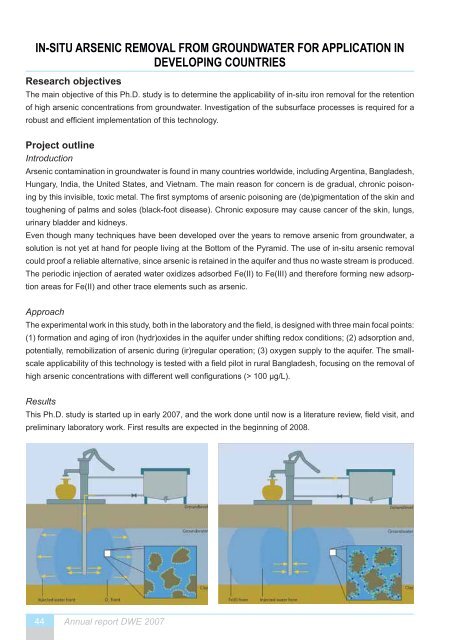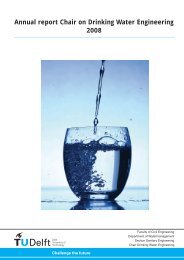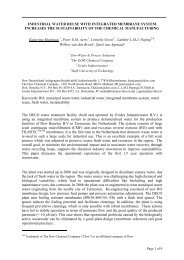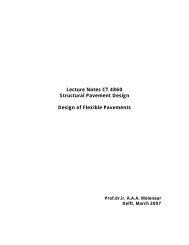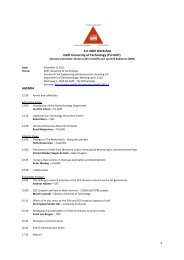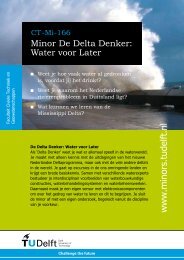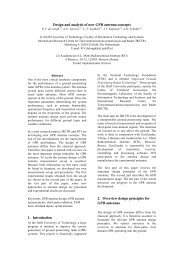Annual report Chair on Drinking Water Engineering 2007 - TU Delft
Annual report Chair on Drinking Water Engineering 2007 - TU Delft
Annual report Chair on Drinking Water Engineering 2007 - TU Delft
You also want an ePaper? Increase the reach of your titles
YUMPU automatically turns print PDFs into web optimized ePapers that Google loves.
IN-SI<strong>TU</strong> ARSENIC REMOVAL FROM GROUNDWATER FOR APPLICATION IN<br />
DEVELOPING COUNTRIES<br />
Research objectives<br />
The main objective of this Ph.D. study is to determine the applicability of in-situ ir<strong>on</strong> removal for the retenti<strong>on</strong><br />
of high arsenic c<strong>on</strong>centrati<strong>on</strong>s from groundwater. Investigati<strong>on</strong> of the subsurface processes is required for a<br />
������������������������������������������������������<br />
Project outline<br />
Introducti<strong>on</strong><br />
Arsenic c<strong>on</strong>taminati<strong>on</strong> in groundwater is found in many countries worldwide, including Argentina, Bangladesh,<br />
Hungary, India, the United States, and Vietnam. The main reas<strong>on</strong> for c<strong>on</strong>cern is de gradual, chr<strong>on</strong>ic pois<strong>on</strong>-<br />
����������������������������������������������������������������������������������������������������������������<br />
toughening of palms and soles (black-foot disease). Chr<strong>on</strong>ic exposure may cause cancer of the skin, lungs,<br />
urinary bladder and kidneys.<br />
Even though many techniques have been developed over the years to remove arsenic from groundwater, a<br />
soluti<strong>on</strong> is not yet at hand for people living at the Bottom of the Pyramid. The use of in-situ arsenic removal<br />
could proof a reliable alternative, since arsenic is retained in the aquifer and thus no waste stream is produced.<br />
The periodic injecti<strong>on</strong> of aerated water oxidizes adsorbed Fe(II) to Fe(III) and therefore forming new adsorpti<strong>on</strong><br />
areas for Fe(II) and other trace elements such as arsenic.<br />
Approach<br />
��������������������������������������������������������������������������������������������������������������������<br />
�����������������������������������������������������������������������������������������������������������������<br />
�����������������������������������������������������������������������������������������������������������������<br />
�������������������������������������������������������������������������������������������������������������������<br />
���������������������������������������������������������������������������<br />
Results<br />
������������������������������������������������������������������������������������������������������������������<br />
preliminary laboratory work. First results are expected in the beginning of 2008.<br />
44 <str<strong>on</strong>g>Annual</str<strong>on</strong>g> <str<strong>on</strong>g>report</str<strong>on</strong>g> DWE <strong>2007</strong>


